
www.alicecoltrane.com
Alice Coltrane Turiyasangitananda was an American jazz pianist, organist, harpist, singer, composer, swamini, and the wife of John Coltrane. Turiyasangitananda translates as the Transcendental Lord’s highest song of Bliss.
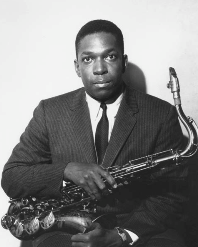
www.johncoltrane.com
John Coltrane departed this mortal plane more than fifty years ago; today he remains among us, more alive than ever. His sound continues to grab the ears of an ever-widening circle of fans. His legend is stone solid: planted firmly in our culture as that of any 20th century musical giant. His saxophone sound—brooding, searching, dark—is still one of the most recognizable in modern jazz. His influence stretches over styles and genres, and transcends cultural boundaries. The modern ideal of music serving a deeply spiritual, connective purpose? A defining facet of John Coltrane.
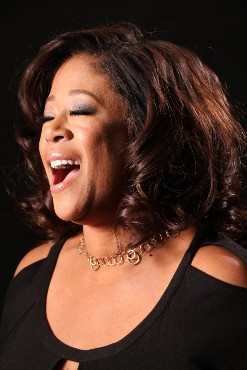
michellecoltrane.com
Michelle Coltrane, daughter of Alice and John, is a vocalist, composer, and Executive Board member of the John & Alice Coltrane Home in Dix Hills, New York. Born in Paris, her immersion in music began at an early age with violin, viola, and clarinet lessons. Around the same time she began singing in the ashram, chanting divine music led by her mother. Every Sunday for over thirty years, Turiya (her mother’s spiritual moniker) led the Bhajans, or devotional songs, while playing organ with the congregation.
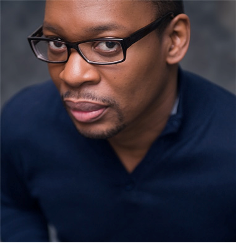
ravicoltrane.com
Ravi Coltrane is a critically acclaimed Grammy™ nominated saxophonist, bandleader, and composer. In the course of a twenty plus year career, Mr. Coltrane has worked as a sideman to many, recorded noteworthy albums for himself and others and founded a prominent independent record label, RKM.
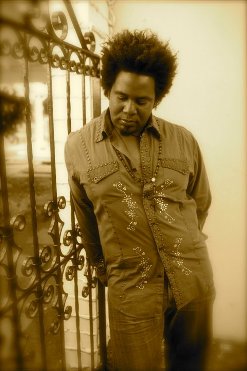
www.discogs.com
Saxophonist and guitarist, Oran Coltrane is the youngest child of John and Alice Coltrane. Oran Lives in California and is a jazz and pop Musician.
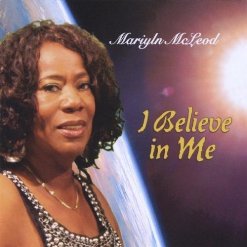
en.wikipedia.org
She was born in Detroit, into a musical family – her half-brother Ernie Farrow became a noted jazz performer, and her sister Alice married John Coltrane and recorded many albums as a jazz keyboard player and harpist. Marilyn McLeod began working as a songwriter for the Jobete publishing company at Motown in 1968. She wrote songs with Johnny Bristol before being teamed with lyricist Pam Sawyer, and the pair co-wrote Diana Ross’s 1976 hit “Love Hangover”, and the High Inergy hit “You Can’t Turn Me Off (in the Middle of Turning Me On)” the following year. In 1982, she co-wrote Jermaine Jackson’s hit with Devo, “Let Me Tickle Your Fancy”, written with Sawyer, Jermaine Jackson, and Paul Jackson, Jr.. As a recording artist, she released some singles under her own name, and fronted the group Pure Magic.
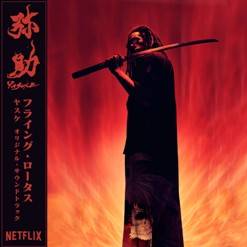
flying-lotus.com
Music from the 6-part TV series executive produced by creative dream team LeSean Thomas (Cannon Busters, Children of Ether, The Boondocks) LaKeith Stanfield (Atlanta, Sorry To Bother You) and Flying Lotus for NETFLIX studios.
Alice Coltrane was a singular cultural figure: an African American woman, a classically trained pianist, an avant-garde jazz musician, a prolific recording artist, a mother, a spiritual guru and more.
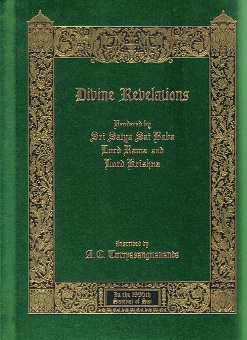
www.innerpath.com
After nearly three decades (1968 thru 1995) of divine revelations, Swamini A.C. Turiyasangitananda received the divine directive to write this book.
Divine Revelations contains some of her sacred meditations, divine visions and spiritual experiences associated with the Avatar of this Age, Sri Satya Sai Baba, concurrent with spiritual guidance and wisdom received directly from Lord Rama, and Lord Krishna.
This book is a comprehensive, chronological account of some of Swamini’s most sacred meditations, communications and experiences associated with the Supreme Lord. It contains trilogies, esoteric wisdom, poetic scriptural verses as well as detailed practical knowledge for the serious spiritual truth-seeker.

thevedanticcenter.org
In accordance with Vedic tradition, The Vedantic Center appreciates the contributions of spiritual wisdom and insight from all faiths. Studies at the ashram included not only Vedic scriptures, but also exemplary narratives and scriptural texts from more recent revelations of God.
Eternity’s Pillar was a television program hosted by visionary musician and spiritual guru Alice Coltrane Swamini Turiyasangitananda. It aired late at night in Los Angeles on KTTV Channel 11 television in the mid-1980s. This episode, from 1985, features music, meditation and musings from Turiya plus spirited bhajan chanting from the students of The Vedantic Center featuring vocalist John Panduranga.
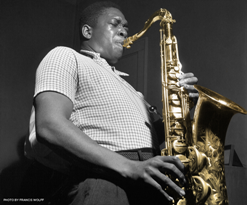
www.coltranefilm.com
Set for wide release in 2017, CHASING TRANE is the definitive documentary film about an outside-the-box thinker with extraordinary talent whose boundary-shattering music continues to impact and influence people around the world. This smart, passionate, thought-provoking and uplifting documentary is for anyone who appreciates the power of music to entertain, inspire and transform.
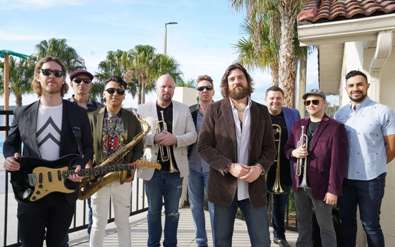
coltranejazzfest.com
John Coltrane was born on September 23, 1926 in Hamlet, NC. He grew up and learned to play saxophone in High Point, NC, graduating from William Penn High School at the age of 16 in 1943. While in high school, Coltrane’s musical influences were Lester Young and Johnny Hodges prompting him to switch to alto saxophone.
He left High Point shortly after graduation, moving to Philadelphia, PA where he began a study of the saxophone in earnest. After a stint in the Navy during World War II (he was part of the band) Coltrane met, performed and recorded with Dizzy Gillespie, Johnny Hodges, Miles Davis, Thelonious Monk and other jazz legends. Coltrane helped pioneer the use of modes in jazz and later was at the forefront of the free jazz movement.
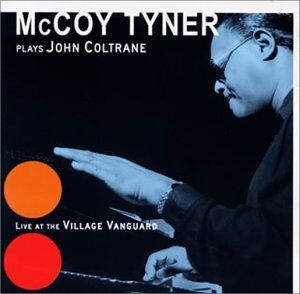
blog.livedoor.jp
Fujioka was in the audience at Village Vanguard, NYC during this recording night.
Without McCoy, no John Coltrane Classic Quartet in the ’60s. His left-handed comp was so powerful and amazing engine accompanied with Jimmy Garrison’s and Elvin Jones’s powers pushing Coltrane music ahead to create new horizon in jazz history. Fortunately, I had been meeting him many times over the world and one of them was in Nice Jazz, France, on July 22, 2009. He pointed me out (with left hand) in a press pit in front of bandstand and greeted.
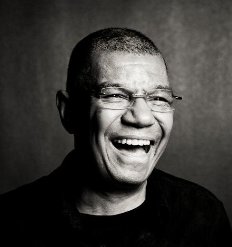
www.jackdejohnette.com
In a career that spans five decades and includes collaborations with some of the most iconic figures in modern jazz, NEA and Grammy winner Jack DeJohnette has established an unchallenged reputation as one of the greatest drummers in the history of the genre. The list of creative associations throughout his career is lengthy and diverse: John Coltrane, Miles Davis, Ornette Coleman, Sonny Rollins, Thelonious Monk, Bill Evans, Stan Getz, Keith Jarrett, Chet Baker, George Benson, Stanley Turrentine, Herbie Hancock, Dave Holland, Joe Henderson, Freddy Hubbard, Betty Carter and so many more. Along the way, he has developed a versatility that allows room for hard bop, R&B, world music, avant-garde, and just about every other style to emerge in the past half-century.
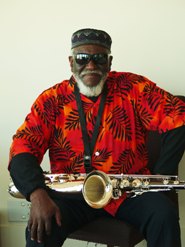
pharoahsanders.wordpress.com
Pharoah Sanders possesses one of the most distinctive tenor saxophone sounds in jazz. Harmonically rich and heavy with overtones, Sanders’ sound can be as raw and abrasive as it is possible for a saxophonist to produce. Yet, Sanders is highly regarded to the point of reverence by a great many jazz fans. Although he made his name with expressionistic, nearly anarchic free jazz in John Coltrane’s late ensembles of the mid-’60s, Sanders’ later music is guided by more graceful concerns.
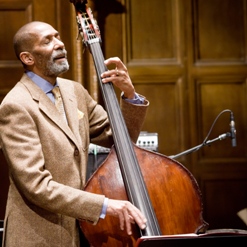
roncarter.net
RON CARTER is among the most original, prolific, and influential bassists in jazz history, with more than 2,200 albums to his credit, an accomplishment honored in the 2015 Guinness Book of World Records. He has recorded with greats including: Tommy Flanagan, Gil Evans, Lena Horne, Bill Evans, B.B. King, the Kronos Quartet, Dexter Gordon, Wes Montgomery, and Bobby Timmons, Jaki Byard, Eric Dolphy and Cannonball Adderley.
From 1963 to 1968, Ron was a member of the classic and acclaimed Miles Davis Quintet. He was named Outstanding Bassist of the Decade by the Detroit News, Jazz Bassist of the Year by Downbeat magazine, and MVP by the National Academy of Recording Arts and Sciences. He earned two Grammy awards, one in 1993 for Best Jazz Instrumental Group, and another in 1998 for Call Sheet Blues from the film Round Midnight.
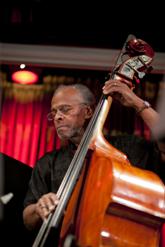
www.cecilmcbeejazz.com
From the time he first arrived in New York City in 1964, Cecil McBee has remained one of the most in-demand bassists in jazz, appearing on hundreds of influential recordings as well as in clubs and concert halls throughout the world. During this same span of five decades, McBee has also become a celebrated composer and teacher, leading his own ensembles and earning a distinguished professorship at the New England Conservatory in Boston, where he has taught for over 25 years. This unparalleled experience is now captured in two remarkable publications: a revolutionary course of instruction to the art of the doublebass and a collection of McBee’s own remarkable compositions, many of which have already joined the canon of jazz standards.
Born in Tulsa, Oklahoma, in 1935, McBee switched from clarinet to the upright bass at the age of 17 and quickly became a sought after voice on his instrument. Following his music studies at Ohio Central State University, the bassist spent two years in the army, conducting the band at Fort Knox. In 1959 he performed with Dinah Washington and moved to Detroit, where his engagement with Paul Winter’s ensemble in 1963–64 brought him eventually to his adopted home, New York City. Within two years McBee had recorded landmark sessions with such major figures as Wayne Shorter, Jackie McLean, Andrew Hill, and Sam Rivers, and held the bass chair in Charles Lloyd’s extraordinary quartet with Jack DeJohnette and Keith Jarrett.
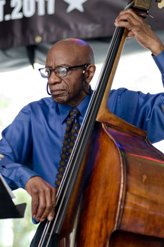
www.reggieworkmanmusic.com
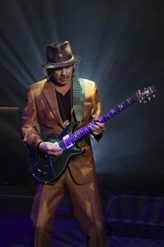
www.santana.com
Carlos Santana is a long time supporter of The Coltrane Home and is the Chair of the Honorary board. Delivered with a level of passion and soul equal to the legendary sonic charge of his guitar, the sound of Carlos Santana is one of the world’s best-known musical signatures. For more than five decades-from Santana’s earliest days as a groundbreaking Afro-Latin-blues-rock fusion outfit in San Francisco-Carlos has been the visionary force behind artistry that transcends musical genres and generational, cultural and geographical boundaries.
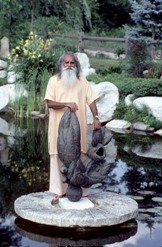
swamisatchidananda
Sri Swami Satchidananda was one of the great Yoga masters to bring the classical Yoga tradition to the West in the 1960s. He taught Yoga postures and meditation, and introduced students to a vegetarian diet and a more compassionate lifestyle. During this period of cultural awakening, iconic pop artist Peter Max and a small circle of his artist friends invited Swamiji to extend an intended two-day visit to New York City, so they could learn from him the secret of finding physical health, mental peace, and spiritual enlightenment.
Three years later, he led some half a million American youth in chanting “OM,” when he delivered the official opening remarks at the 1969 Woodstock Music and Art Festival and became known as the “Woodstock Guru.”
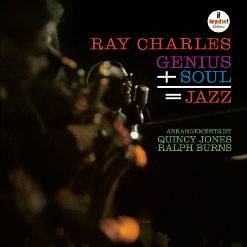
www.impulserecords.com
For sixty years, Impulse Records has stood as a label of musical integrity and lasting cultural significance. Known as the “house that Trane built” in honor of its best-selling artist John Coltrane, the label produced music exciting in its experimental charge, and spiritual in its priority. Sonny Rollins, Quincy Jones, Max Roach, Ray Charles, Alice Coltrane, Keith Jarrett, Charles Mingus, Sun Ra, and Pharoah Sanders were but a few of the legendary musicians who helped define the label’s sound and message. To this day, Impulse continues to proudly wear its distinctive orange-and-black color scheme, and is home to the new vanguard of creative musicians including Brandee Younger, Shabaka Hutchings and his groups Sons of Kemet, Shabaka & the Ancestors, and the psychedelic jazz trio The Comet Is Coming.
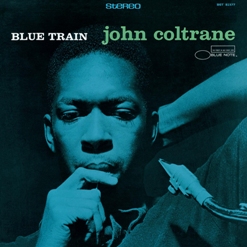
www.bluenote.com
Despite a relatively brief career (he first came to notice as a sideman at age 29 in 1955, formally launched a solo career at 33 in 1960, and was dead at 40 in 1967), saxophonist John Coltrane was among the most important, and most controversial, figures in jazz. It seems amazing that his period of greatest activity was so short, not only because he recorded prolifically, but also because, taking advantage of his fame, the record companies that recorded him as a sideman in the 1950s frequently reissued those recordings under his name and there has been a wealth of posthumously released material as well. Since Coltrane was a protean player who changed his style radically over the course of his career, this has made for much confusion in his discography and in appreciations of his playing. There remains a critical divide between the adherents of his earlier, more conventional (if still highly imaginative) work and his later, more experimental work. No one, however, questions Coltrane’s almost religious commitment to jazz or doubts his significance in the history of the music.
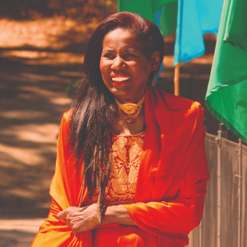
www.luakabop.com
As some of you may know, Alice Coltrane was a legendary pianist, composer, spiritual leader, and the wife of John Coltrane, the most venerated and influential saxophonist in the history of jazz. In 1967, four years after meeting John, he died of liver cancer, leaving Alice a widow with four small children. Bereft of her soul mate, Alice suffered sleepless nights and severe weight loss. At her worst, she weighed only 95 pounds. She had hallucinations in which trees spoke, various beings existed on astral planes, and the sounds of “a planetary ether” spun through her brain, knocking her into a frightening unconsciousness.
Tucked away in the residential neighborhood of Dix Hills, this two-story, brick and wood frame home was where John and Alice Coltrane chose to put down roots and raise their family from 1964 to 1973. John and Alice wrote and recorded some of their most enduring works in this peaceful suburban setting.
Built in 1952, the John and Alice Coltrane Home in Dix Hills is similar to other Midcentury Modern residential buildings in the region. One of the most significant rooms in the home is the second-floor bedroom where John composed his masterwork, A Love Supreme, in 1964. Equally important is the basement, which served as Alice’s studio where she recorded her first album, A Monastic Trio, in 1968.
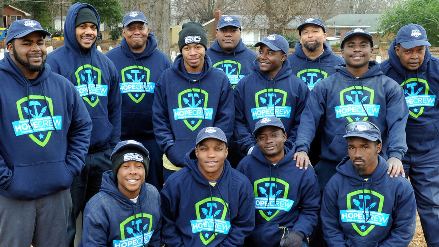
savingplaces.org
In November 2017, the National Trust for Historic Preservation launched its African American Cultural Heritage Action Fund, a preservation campaign to preserve and protect places that have been overlooked in American history and represent centuries of African American activism, achievement, and resilience. Since launching the program, the Action Fund has raised $45 million and supported more than 150 preservation projects nationally.
Through this preservation effort—the largest ever undertaken in support of African American historic sites—we partner with and empower Black and diverse communities to expand the American story.
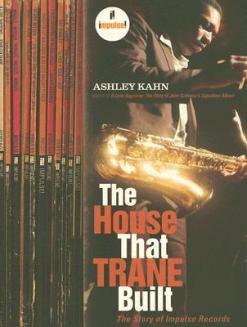
www.goodreads.com
Following the path of its star musician John Coltrane, Impulse Records cut a creative swath through the 1960s and 1970s with the politically charged avant-garde jazz that defined the label’s musical and spiritual identity. The House That Trane Built tells the story of the label, balancing tales of individual passion, artistic vision, and commercial motivation. Weaving together research, dynamic album covers, session photographs, and nearly one hundred interviews with executives, journalists, producers, and musicians from Ray Charles and Alice Coltrane to Quincy Jones, Pharoah Sanders, McCoy Tyner, and others–this is the riveting tale of an era-shaping jazz label in the age of rock. The thirty-eight Album Profiles–a veritable book within a book–offer a consumer’s guide to the best and most timeless titles on Impulse.
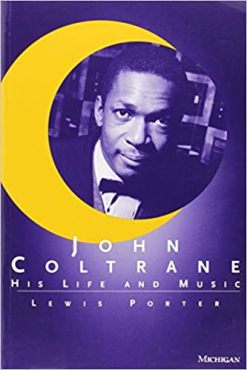
www.amazon.com
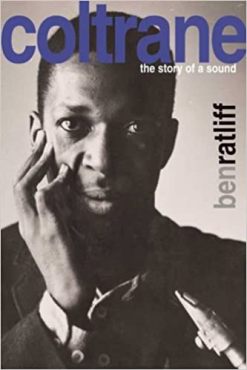
www.amazon.com
The acclaimed jazz writer Ben Ratliff addresses these questions in Coltrane. First Ratliff tells the story of Coltrane’s development, from his first recordings as a no-name navy bandsman to his last recordings as a near-saint, paying special attention to the last ten years of his life, which contained a remarkable series of breakthroughs in a nearly religious search for deeper expression.
Alice Coltrane was a composer, improviser, guru, and widow of John Coltrane. Over the course of her musical life, she synthesized a wide range of musical genres including gospel, rhythm-and-blues, bebop, free jazz, Indian devotional song, and Western art music. Her childhood experiences playing for African-American congregations in Detroit, the ecstatic and avant-garde improvisations she performed on the bandstand with her husband John Coltrane, and her religious pilgrimages to India reveal themselves on more than twenty albums of original music for the Impulse and Warner Brothers labels.
In the late 1970s Alice Coltrane became a swami, directing an alternative spiritual community in Southern California. Exploring her transformation from Alice McLeod, Detroit church pianist and bebopper, to guru Swami Turiya Sangitananda, Monument Eternal illuminates her music and, in turn, reveals the exceptional fluidity of American religious practices in the second half of the twentieth century. Most of all, this book celebrates the hybrid music of an exceptional, boundary-crossing African-American artist.
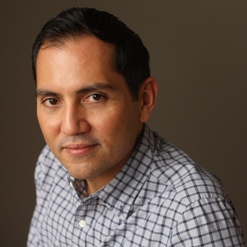
www.wbgo.org
Nate Chinen has been writing about jazz for more than 20 years.
He spent a dozen of them working as a critic for The New York Times, and helmed a long-running column for JazzTimes. As Director of Editorial Content at WBGO, Chinen works with the multiplatform program Jazz Night in America and contributes a range of coverage to NPR Music.
He is author of Playing Changes: Jazz For the New Century, published in hardcover by Pantheon in 2018, and on paperback by Vintage in 2019. Hailed as one of the Best Books of the Year by NPR, GQ, Billboard, and JazzTimes, it’s a chronicle of jazz in our time, and an argument for the music’s continuing relevance. It has also been published internationally, in Italian and Spanish editions.

Website design by krs-creative.com
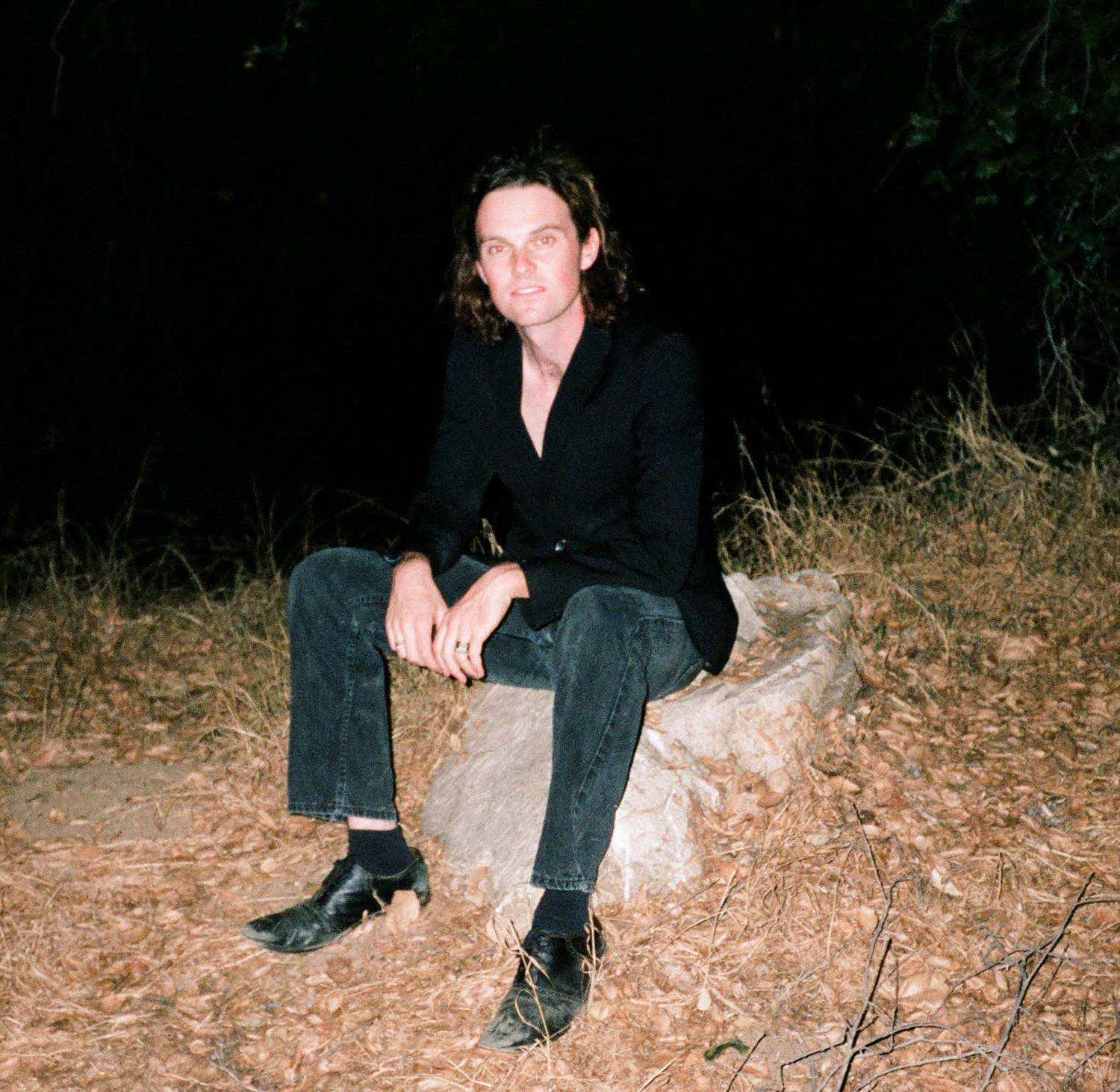
Website Curation and Content written by Ross Chait
I want to be a force for good
John Coltrane
The Music is in your heart, your soul, your spirit
Alice Coltrane
81H East Jefryn Blvd
Deer Park, NY
11729
USA
Tel: (631) 860-9200
Email: info@thecoltranehome.org